The Defining Crisis of Our Time: A Closer Look into Climate Change
December 15, 2021
“We are the first generation to feel the effect of climate change and the last generation who can do something about it,” former President Barack Obama once said. The effects of climate change have already become apparent across the world: sea levels are rising, polar regions are melting, natural disasters are growing more severe, and coral reefs are dying. Said to be the “defining crisis of our time”, climate change will continue to deal irreversible damage to our entire planet unless we take action. In this package, Eastside addresses the different aspects of climate change, discusses mitigation strategies and solutions, and explores students’ perspectives on this global emergency.
What is Climate Change?
Although defined by the United Nations as “long-term shifts in temperatures and weather patterns”, climate change and its substantial effects on the world are much more than this modest definition can encapsulate. Climate change is one of the most prevalent issues in society today, regarded by many as an existential threat to life on Earth. Even if partially influenced by natural causes, climate change has been driven and accelerated primarily by human activity, especially since the Industrial Revolution and the popularization of fossil fuels began. Through the burning of fossil fuels, humans emit greenhouse gases into the atmosphere. These gases act as a blanket and trap heat in the atmosphere. Inevitably, global temperatures rise. Without an effort to reduce such gases into our atmosphere, the Earth will continue to deteriorate and will no longer be able to support life.
Despite humans significantly impacting the environment, natural phenomena can change the climate as well. For example, the sun can cause an increase in the atmosphere’s average temperatures. However, the sun’s impact on global temperatures has not been severe thus far.
Additionally, our planet has many “built-in” natural processes that help fight climate change on its own. According to the National Oceanic and Atmospheric Administration (NOAA), “ocean currents act much like a conveyor belt, transporting warm water and precipitation from the equator toward the poles and cold water from the poles back to the tropics.” In this way, ocean currents regulate the temperatures and climate on Earth, helping to counteract environmental changes. These ocean currents are beneficial to us as it makes the Earth have temperatures far less dangerous to humans.
According to the United Nations, since the late 1800s, the overall temperature of our planet has increased by 2 degrees Fahrenheit (1.1 degrees Celsius). While this may not seem like a drastic change, even a small increase in overall temperature can throw off the delicate natural balance of the world.
Climate change has left many detrimental impacts on the environment, all of which will only get worse without society uniting to prevent the continuation of these effects. Some of these effects include species endangerment and extinction, rising sea levels, stronger and more frequent natural disasters, and an increase in diseases. Climate change has increased the likelihood of extinction for over 10,000 species in the International Union for the Conservation of Nature’s Red List of Threatened Species. Many species face the threat of extinction because various effects of climate change — such as rising sea levels — can severely limit their ability to adapt and survive in their environments. The first mammal reported to go extinct directly due to climate change was the Bramble Cay melomys (Melomys rubicola): its island in the Great Barrier Reef was completely destroyed by rising sea levels. Rising sea levels result from the ice melting from Earth’s North and South Poles and can decrease land space, especially in coastal areas. Climate change has also been linked to stronger storms, which can demolish homes and upset the economies and way of life of people in disaster-prone areas. Furthermore, diseases such as malaria are prone to growing from climate change.
According to the U.N., we must prevent the global temperature from increasing more than 1.5 degrees Celsius to maintain a livable climate. However, based on the current climate plans globally, our planet’s temperature will see an increase of 2.7 degrees Celsius before the end of the century.
With such impacts in mind, it is fundamental to reach a society that implements sustainability, with the use of renewable and clean energy sources, in everyday life. Renewable and clean energy sources that could be implemented into daily life include solar panels, hydroelectricity, geothermal energy, wind energy.
You can also decrease greenhouse gas emissions by lessening transportation that requires the usage of gasoline and diesel. This can be done through public transportation, sharing a vehicle, and biking.
Every action towards combating climate change is significant no matter how big or small. Educating others on climate change can be one of the most important actions one can take because without being aware of what climate change is, no one will understand the detrimental effects it has.
It is important to recognize that every effort to combat climate change is very helpful, especially when these efforts are joint. Climate change will not go away on its own — we must take responsibility for our actions to slow the rising temperatures and decrease greenhouse gas emissions. On Earth, we are one large community. We must join hand in hand to protect the environment for the generations to come.
What causes climate change?
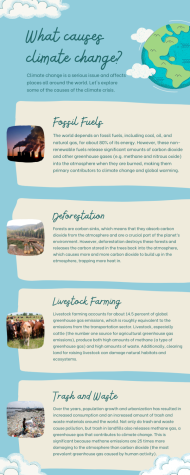
U.S. government policies on climate change
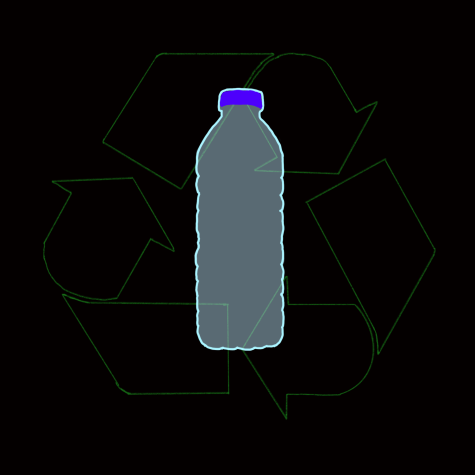
Our nation, among many others, are trying to pass different legislation focusing on bettering our environment. Among these proposed legislations are the Bottle Bill, the Break Free from Plastic Pollution Act, and the CLEAN Future Act.
If you have ever seen a little sticker on a bottle with a return incentive of receiving five or ten cents back, you have first handedly experienced the Bottle Bill. A Bottle Bill, or a container deposit law, helps protect our environment by encouraging people to recycle their plastic bottles, reducing the use of plastic.
A Bottle Bill gives customers an incentive to return their bottles, which allows beverage companies to wash, refill, and resell bottles. To start the process, the retailer pays the distributor a deposit, which is then paid back by the consumer. This deposit is then granted back to the consumer when the bottle is returned to a retail store, redemption center, or a reverse vending machine. This makes a smart incentive for actually returning the bottle the consumer paid five or ten cents originally, considering how fast that five to ten cents adds up when a majority of households buy an immense amount of plastic bottles every week.
Bottle bills create a privately-funded infrastructure for beverage containers and make the producers and consumers responsible for their packaging waste. Focusing on solely beverage containers is the most impactful to our planet because beverage bottles compose 40-60% of litter. Also, recycling these bottles saves an immense amount of time and consumption of an enormous amount of energy and great quantities of greenhouse gas emissions.
Currently only 10 states put the Bottle Bill into effect, including California, Connecticut, Hawaii, Iowa, Maine, Massachusetts, Michigan, New York, Oregon, Vermont. In both 2011 and 2016, New Jersey campaigned for the Bottle Bill, however, it was rejected.
Valerie Wang (‘23), an advocate for the New Jersey Bottle Bill, believes that when an independent organization tried to push for the bottle bill, they didn’t gain enough support from the public, therefore when a NJ rep tried to get the bill passed it was rejected because there “was virtually not enough pressure.”
With that being said, Wang’s goal is to “educate the Cherry Hill community and beyond through social media,” more specifically the instagram account @njbottlebill, in order to gain a following for the bill similar to the CHPS later start times last summer.
With, hopefully, an increasing amount of support, Wang believes “that there is a much higher chance that the bottle bill will actually be implemented in NJ once it is re-proposed by a NJ representative once again.”
Although there is no national bottle bill implemented in the United States, The Break Free from Plastic Pollution Act and The CLEAN Future Act use the bottle bill’s incentive and method and are now up for consideration in Congress. Both Acts require similar game plans, but have different long term goals. For example, The Break Free from Plastic Pollution Act is a bill to amend the Solid Waste Disposal Act in order to prevent pollution from entering into animal and human food chains as well as waterways. Meanwhile, The CLEAN Future Act’s plan is to put the nation on a path to a net-zero greenhouse gas economy by 2050.
What is renewable energy?
Post-Industrial Revolution, coal became a massive source of energy throughout the United States and the rest of the world. It aided countries in manufacturing things that couldn’t even be imagined in earlier centuries. However, we’ve learned as a society that although coal can help the factories of large corporations, it lacks the efficiency and environmental conscience that other sources of energy can provide.
Renewable energy is that other source of energy. But, what is it?
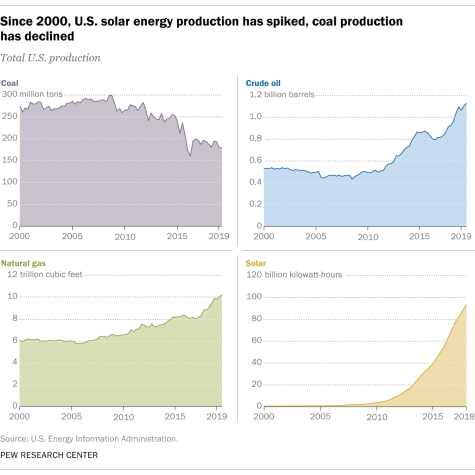
Renewable energy is energy that derives from natural resources that constantly replenish themselves, unlike finite resources including oil, natural gas, and coal. These infinite energy sources include hydroelectric, wind, solar, and geothermal power. Wind turbines and solar panels are often the most visible signs that a company, or even a large city, is using renewable energy to power their buildings, cellular devices, and anything else that requires electricity.
By having their corporations use renewable power, countries can lower their carbon emissions by great amounts. According to the US Energy Information Administration, 12% of the states’ energy consumption came from renewable sources just last year. Furthermore, the administration also reports that the US broke their record of least coal use for production since 1776.
The first of the aforementioned sources of renewable energy is hydroelectric power. Such a source comes from water, usually in large quantities from rivers or sizable lakes, which can quickly be turned into electricity by generator motors. As of right now, hydroelectric power reigns as the most widely used renewable energy source in the US.
Wind power is another great source of renewable energy, But, wind power no longer comes simply from windmills. Now, we use wind turbines to supply energy. The turbines can rise as tall as NYC skyscrapers, with their diameters being nearly as wide. Wind turbines are often placed in deserts, called “wind farms,” with many of them standing side by side.
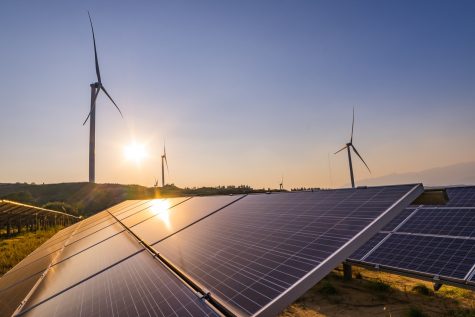
Another, and probably the most well-known, renewable energy source is solar power. Not Lorde’s newest album, though. Solar power actually shows itself in panels made of silicon and other materials that can transfer solar energy directly into electricity. If a homeowner wants to have renewable energy implemented into their house, they will probably use solar panels, as they are the most common form of renewable energy in homes, small businesses, and any other building that isn’t linked directly to mass production.
Biomass and geothermal energy both come from the earth and the earth alone. Biomass energy’s sources are wood and plants, which can produce heat and electricity when burned. Though biomass energy is referred to as renewable, burning materials can still produce small amounts of coal. Geothermal energy has lower carbon emissions than biomass energy, and it typically comes from water stored deep in the ground.
As renewable energy grows, countries around the world can lower their carbon footprint, slowing down climate change as we know it.
Planet vs. profit: The impact of major corporations on climate change
When a conversation starts to dry out, the question “How’s the weather?” never ceases to fail. However, the usual “really nice” has transitioned into “It’s unusually warm for December”. New Jersey, which typically has cold winters and strong blizzards, is currently undergoing a warm spell that is on track to make the record book for one of the warmest Decembers. Climate change, closely related to global warming, has made a more increasing presence as years go on. The volatile climate and rise in temperature can no doubt be attributed to the emission of pollutants from major companies.
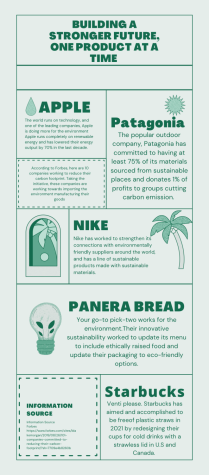
A report from the CDP (formerly known as the Carbon Disclosure Project) in 2017 found that 71% of carbon emissions since 1988 were released into the atmosphere by only 100 fossil fuel extraction companies. These carbon emissions are a type of greenhouse gas that contributes to the rapid warming of the Earth and the deterioration of ecosystems. Other companies have dumped tons of waste and other pollutants into the ocean which have harmed marine life and the drinking water we intake. To these major company CEOs, profit dominates over public welfare every time. Although the argument for maximizing profit is twisted by CEOs into pushing a narrative that eliminating oil use would push 2 billion people into poverty, the opportunity for those same companies to transition into the clean and renewable energy industry to provide jobs, refutes that claim. Exxon CEO Rex Tillerson had even commented “What good is it to save the planet if humanity suffers?” These company CEOs assume government positions and influence how loose the companies are regulated, including environmental policies, and even education. Companies push for a biased education focusing on the fossil fuel industry in social studies, economic, and civic classes. These circumstances make it more necessary than ever to make our voices heard and demands met.

Fortunately, many companies have made strides to become part of the solution. According to a new report called “Taking Stock: A global assessment of net zero targets”, at least one-fifth of the world’s largest companies have committed to net zero emissions targets. These companies include Ford Motor Company and American Airlines. They pledge to not add new emissions to the atmosphere, and they can do so by reducing emissions or using forests or oceans to absorb the new emissions. Google has been carbon neutral since 2007 and aims to be carbon-free by 2030. Now, they are pioneering a new recycled alloy for their products which aligns with their mission statement to “continue to innovate ways to make our operations more sustainable, inspiring others to follow”. However, will these combined efforts be made in time though before the damages are reversible?
While companies contribute the most to the endangerment of our planet, we, on an individual level, can make efforts too to sustain an eco-friendly lifestyle and press for lawmakers to regulate the conduct of the companies. We have no Planet B.
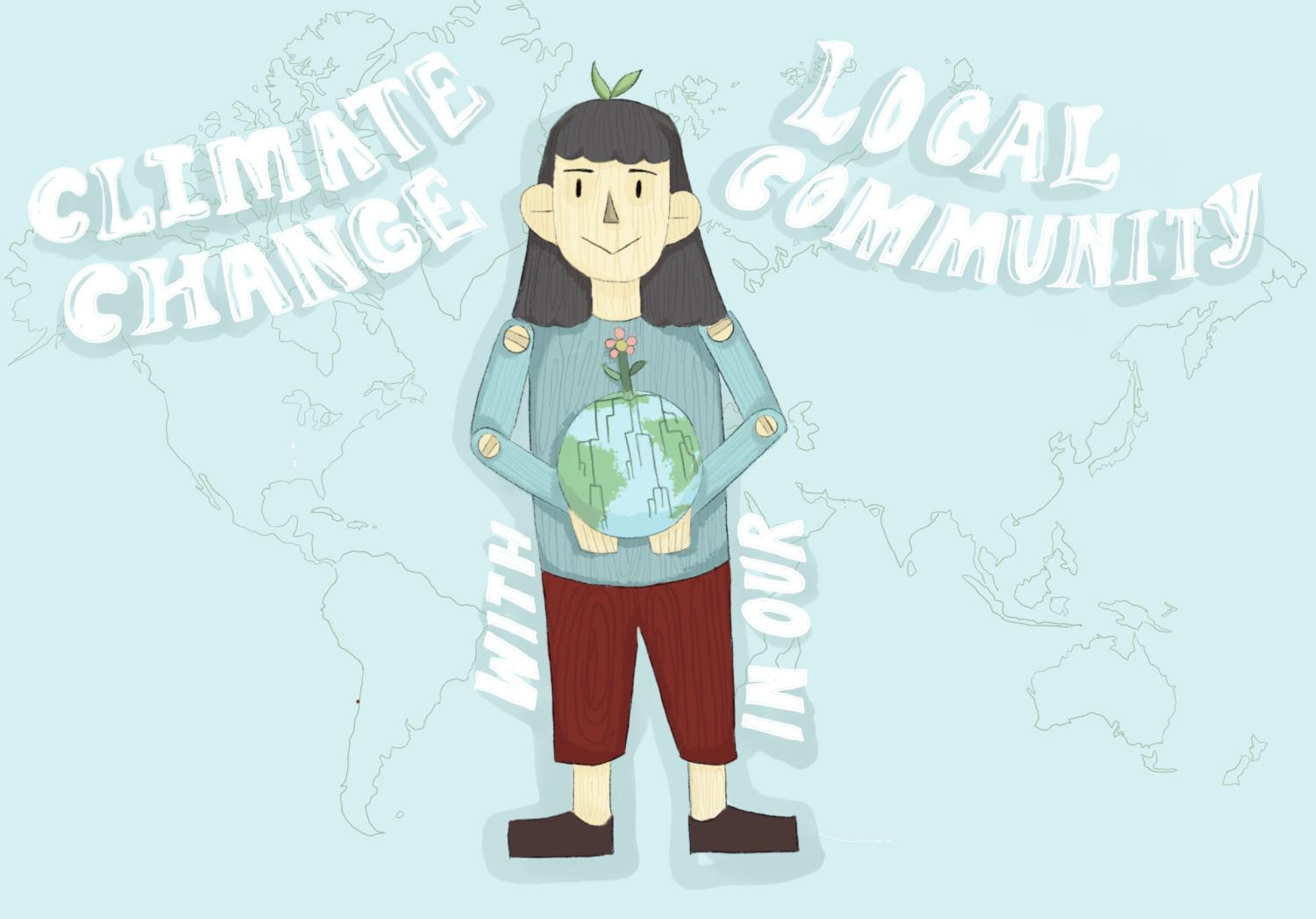
Exploring student perspectives on climate change
In recent years, combating climate change has become an increasingly pressing issue nationally and globally. In August of 2021, the United Nations (UN) released a report outlining the potential long-term effects of current human activities on the future climate. According to their research, the current progression of climate change could potentially lead to extreme, noticeable changes to daily life–such as a potential global temperature increase of 1.5 degrees Celsius (34.7 degrees Fahrenheit) within the next two decades. Many of these changes may not impact the current generation of adults, but they will have much more noticeable effects on the next generations.
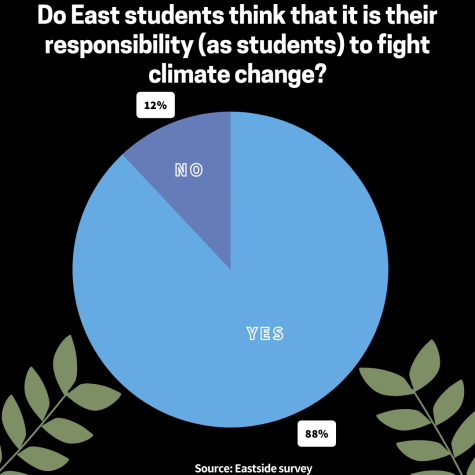
According to a 2021 poll from Pew Research Center, 67% of adult Generation Z members identified maintaining the climate and a sustainable planet as a top priority. Even current students have begun to recognize the importance of climate change–with many student groups and protests forming across the country to address the issue. This rise of awareness leads to a compelling question: how does the Cherry Hill East community view climate change?
In a recent Eastside survey, almost 100% of respondents — all of whom were East students — identified climate change as an “important issue in the world.”
This survey was given online to approximately 50 students to determine their perspectives on climate change and the younger generations’ roles in combating it. Out of these participants, over half were in the 10th grade. These demographics slightly skew the data since the distribution of respondents by year isn’t proportional to the population at East. However, the results of this survey are still compelling and align with other sources — such as the previously mentioned Pew Research poll on views on climate change by generation.
Most of the students surveyed expressed concern for their future if climate change patterns continue. When asked to list words that describe their feelings towards the climate crisis, the most common responses were concerned (26%) and anxious (38%). Furthermore, most of those surveyed used similar negative emotions, mentioning words like worried and scared several times.
“I am anxious because future generations might not get to experience what we have today – clean beaches to swim in, snow to play in, and more,” wrote Angelina Li (‘23) when asked about her concerns about climate change. Like Li, many students fear the climate crisis will negatively impact the lives of those in future generations.
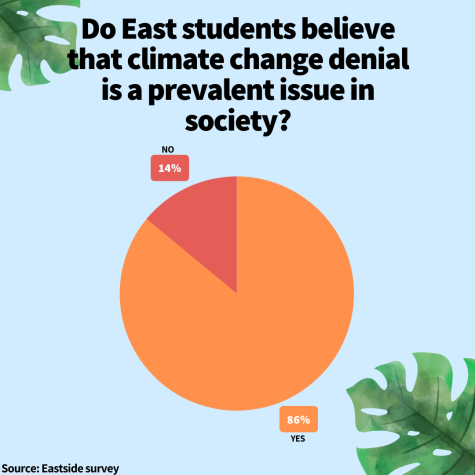
Along with fears surrounding the effects of climate change, many also expressed frustration with climate change deniers. 86% of respondents referred to climate change denial as a “prevalent issue in society.” Though only a few mentioned knowing these deniers personally, many cited their decision to ignore the issue as a hindrance to the preservation of our planet.
“Climate change is a real thing that we must come to terms with– whether we want to address it or not–because it is our responsibility to protect the natural world.,” wrote Grace Yoon (’24). Other students also emphasized the importance of acknowledging climate change as a scientific fact rather than a theory.
While most students surveyed had opinions on the climate crisis, many didn’t know what East was doing to address these issues. Additionally, many who did know East’s policies viewed them as inadequate.
76% said they did not believe East was doing enough to address the climate crisis.
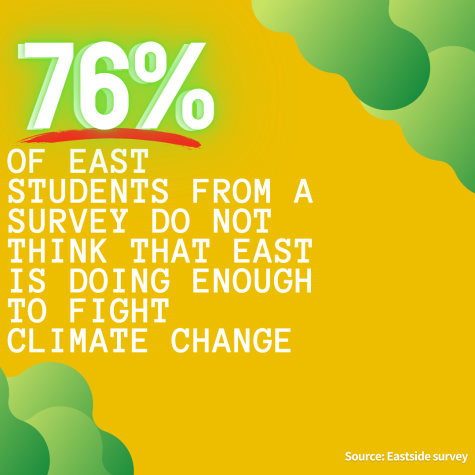
“We don’t talk a lot about it in school,” wrote Heidi Kwak (‘24). Kwak also wrote she felt “unaware” when asked to list words to describe how she feels about climate change. Many students share the sentiment that the school does not do enough to educate students about the climate or make an effort to make the school more environmentally conscious. These students feel the need to take matters into their own hands.
Sean Ladinsky (’25) said he was “disappointed” in the current adult leaders and government officials for failing to address the crisis directly. Because of this, he and 88% of respondents said students have the responsibility to help fight climate change. However, Landisky also believes that adults also need to take accountability for their contributions to climate change.
“Adults should not completely depend on us to fix [climate change],” Ladinsky also wrote.
Overall, the students surveyed were generally wary about the impending effects of the climate crisis. Consequently, world leaders have begun addressing the younger generations’ environmental concerns.
“My generation has largely failed until now to preserve both justice in the world and to preserve the planet. It is your generation that must make us be accountable to make sure that we don’t betray the future of humankind,” said United Nations Secretary-General António Guterres at the 2019 UN Youth Climate Summit. As the time to reverse the effects of climate change decreases, it is evident that the younger generation has grown increasingly more concerned with the planet’s future.
The East community has slowly begun to recognize the impending threat of the climate crisis. However, one thing is clear–the students want action, not passivity.
What are some words that East students associate with climate change? Roll your mouse over the interactive to learn more! (Data from an Eastside survey)
What are some feelings that East students feel about climate change? Roll your mouse over the interactive to learn more! (Data from an Eastside survey)
Shaping tomorrow: The importance of climate change education
As the Earth continues to warm, and the world moves into 2022, it is now that action and concrete steps must be taken before we are at the point of no return. Greenhouse gases and carbon emissions fill the atmosphere, leaving Earth warmer than it was and society, as a whole, in fear for its future tomorrow.
Even at Cherry Hill High School East, with the addition of clubs, focus groups, and classes built on the basis of tackling the issue, climate change has taken precedent and continues to be a leading factor of anxiety, fear, and unsureness– on top of stressful classes, activities, and more homework than ever.
According to an Eastside survey, with nearly 100 responses from the East community, around 87% of students – an overwhelming majority – want to learn more about the issue facing the world.

An even greater majority of East students feel Cherry Hill East and the Cherry Hill Public School District do not put nearly enough emphasis on climate change in the classroom. Students who go to school to learn and take part in change and revelation, who want to learn how and why do not get the opportunity to learn about a topic interesting to them at their school. Cherry Hill should focus on climate change, especially because it is an issue that will be on the top of the importance list heading into the coming school years.
Certain students made it clear that they think it is important but would just want to know how to help or why it would affect them. One student, in particular, would love to learn more about it but is not sure how it would affect their mental health.
“I think [climate change education] is important because of how global warming and climate change affect our futures. We need to take care of our planet because, as of right now, it is the only one we have. I think people are so fixated on finding a new planet Earth when they could actually focus on saving this one” said Grace Yoon (‘24).
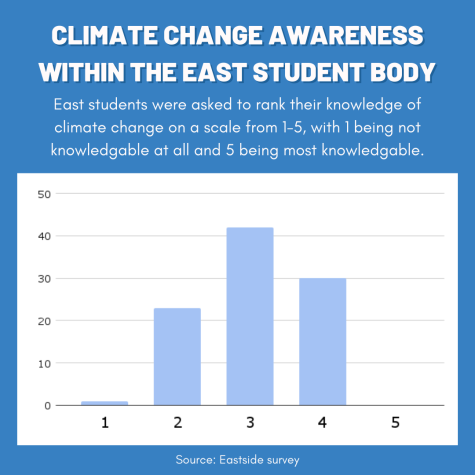
No students at East feel completely knowledgeable on the subject, even with the addition of a climate change elective course.
“I have always thought that climate change is important and if anything, the class is making me recognize even more so how much people are harming the planet,” said Brielle Lampf (‘23), a student in one of the climate change classes.
Climate change is extremely important to the students at Cherry Hill East, especially the students who want to help shape tomorrow. From the survey and the East halls, filled with the flyers for climate change-dedicated organizations, as well as the news and governmental climate change task forces, climate change is real and needs to be focused on. Students feel that required science courses should focus more on climate change and the way to make a difference, reduce carbon emissions, and how global warming will affect them.
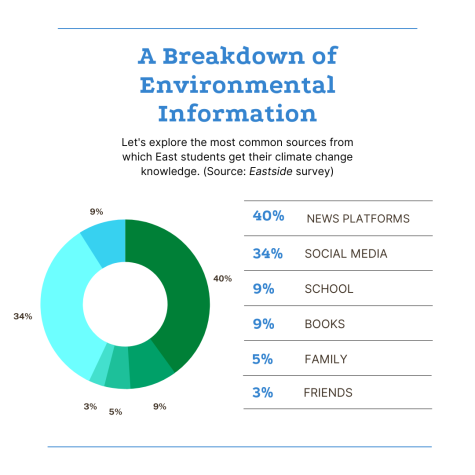
“I think it’s very important because it is a problem that is rapidly increasing at an alarming rate, and if we don’t do anything about it soon, there may be devastating consequences,” said Alexander Kang (‘24).
Climate change affects students’ mental health, the clothes they wear during Earth’s different seasons, their future homes and places they live in (as many believe the coasts of the world will cease to exist soon), physical health problems because of pollution, world ecosystems and food sources, and so much more.
“I feel that it is a very important issue that should be discussed throughout all years of school and taught at a young age. The other generations should learn about global warming at a young age to prevent further damage to the planet,” said Katie Nguyen (‘24).
Interview with Mr. Vernachio on East’s “Climate Science to Action” class
Building a more sustainable community at East
Each day, Cherry Hill East students spend 7 hours at school (perhaps even longer due to extracurricular activities after school), alongside East teachers and staff. Thousands of people in one building for at least seven hours a day can generate a ton of plastic, paper, and other products, as well as use up a lot of energy. In fact, according to a Harvard Graduate School of Education research paper, schools are actually one of the largest consumers of energy, and produce the equivalent to 15 million cars, annually. By taking steps to become more eco-friendly, not only can schools help drastically reduce greenhouse gas emissions but by leading by example, schools can help show students how to be more environmentally-friendly in their everyday lives as well.
As of now, Cherry Hill East has already undergone some renovations to make our school building more eco-friendly. For example, the classrooms and hallways at East currently use motion-sensor LED lights, saving both energy and money since the lights cannot be left on unoccupied. Many other renovations have been made throughout the district to help schools reduce energy consumption. Over the past few years, all of the boilers in district schools were upgraded to high efficiency units. Additionally, work was done at East last year to replace many of the windows and doors with more thermally-insulated (and effective) units.
Nevertheless, like any school, there are many possible improvements that could be made to reduce East’s carbon footprint and to increase its sustainability and environmental friendliness.
Taking action to address the climate crisis

Imagine our world in 2050. Do you envision gleaming cities basked in a futuristic glow, sparkling with towering skyscrapers and bullet trains winding through the streets? Or, perhaps you see a world where disease and disaster run rampant: a place where temperatures rise high enough to cook human flesh and you can barely walk outside without your throat filling with pollution; where entire cities have sunk below rising sea levels and hundreds of species of wildlife have been lost. Unfortunately, the latter is no longer just an outlook shared by pessimists: the climate apocalypse is a reality that our planet and all life on it will be forced to confront in the future, unless we take action now.
As youth, perhaps the most important way we can address climate change is through educating ourselves and those around us, as well as voicing concerns and demanding action. For many people, climate change may not yet have direct, conspicuous effects on their daily lives, giving the illusion that climate change is a far-off issue. This, however, is far from the truth: according to a study published in the journal Science, if climate change continues to accelerate on its current trajectory, today’s average 6-year-old will live through about three times as many climate change disasters as their grandparents. This number is exacerbated in developing countries such as sub-Saharan Africa, where today’s infants are projected to experience 50 to 54 times as many climate disasters as someone born in the prior to the industrial era. With such dire situations, we shouldn’t just stick our heads in the sand: we need to change our mindsets and attitudes about climate change and look to take initiative.
As with any important issue, raising awareness for climate change is a crucial step towards taking action. Especially in the age of social media and modern technology, it is easier than ever to advocate for a cause and inform yourself and those around you. Students further take action by forming and joining teams to focus on climate action, from school clubs and local organizations to national organizations and campaigns.
Moreover, we can also implement changes into our own lifestyles to be more eco-friendly.
For example, students can reduce carbon emissions by looking for opportunities to carpool or take public transportation, such as by carpooling with a friend or taking the bus to school. Driving is the largest contributor to the average household’s carbon footprint and can contribute approximately 55% of household carbon emissions, according to the American Public Transportation Association. But taking school buses (or even carpooling with friends) can prevent a lot of carbon emissions. Just one school bus replaces around 36 cars on the road — which collectively keeps about 17 million cars off the road daily, prevents over 62 billion miles from being driven by family cars annually, and saves 3 billion gallons of gas annually.
Another way students can help the environment is by eating less meat. This doesn’t have to mean going vegan: simply striving to eat one or even two meat-free meals on a weekly basis can make a big difference. In fact, according to the Environmental Defense Fund, if every American ate one meat-free meal a week, the resulting reduction in carbon emissions would be equivalent to taking over 5 million cars off the road annually.
Our planet has been teetering on the edge of irreversible damage and only by taking action and holding ourselves accountable can we give future generations the gleaming, beautiful world that we have dreamed of.
COMIC: Fighting Climate Change Together
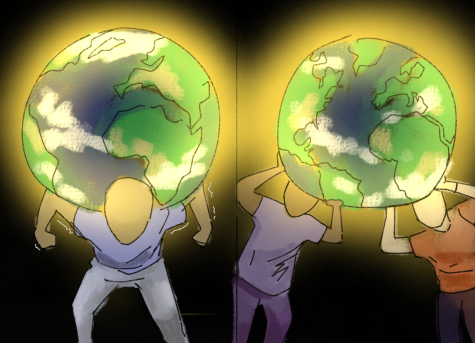
Interview with Ellie Noh and Crystal Yeh on LEAP for Climate
Students for Solar
CHPS Students for Solar is a group of Cherry Hill Students that are interested in helping their school district go from fossil fuel energy to solar energy. Solar energy, which is clean and renewable, only makes up a little over 3% of the country’s total energy. On a local level, the Cherry Hill School district uses mostly fossil fuels to power its buildings.
Daniel Ovadia (myself), Ellie Noh, Kyle Lehrfeld, and Crystal Yeh are the co-founders of the group. There is an Instagram account, a Change.org petition, and a reminder to get our message out.
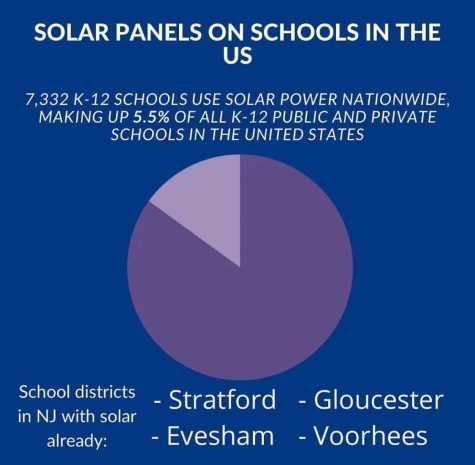
There are multiple reasons that we believe solar power is the best energy option for the school district. The first one is the reason commonly associated with solar energy: environmental reasons. The air quality in Camden County is second-worst in the state of New Jersey, according to New Jersey’s 2021 air quality survey. This air quality could be improved in Camden County if fossil fuels went into the atmosphere at a less extreme level. Another environmental reason that the school district should adopt solar panels is that solar energy, unlike fossil fuels, does not put harmful chemicals into the atmosphere. According to the EPA (Environmental Protection Agency) “When fossil fuels are burned, they release nitrogen oxides into the atmosphere, which contribute to the formation of smog and acid rain.” Acid rain in particular is dangerous to the ecosystems of forests, lakes, and other biomes. If we cut down on these emissions, the environment will improve for the population of Camden County.
This all sounds great, but there is just one problem, the price. However, you may be interested to learn that implementing solar panels would actually save money, not waste it.
However, you may be interested to learn that implementing solar panels would actually save money, not waste it. Solar panels are certainly an investment, but it is a worthwhile one.
— Daniel Ovadia ('25)
Solar panels are certainly an investment, but it is a worthwhile one. They can last for up to 40 years without breaking and are extremely durable. Another thing to consider is that 79% of the solar panels installed on schools were financed by another group, such as a solar developer. Other schools that have implemented them have saved thousands of dollars. Beeler and Van Zant elementary schools have been estimated to have $30,000 to $35,000.
All of this is great, but we need more people working at this cause to reach our goal of having solar panels on Cherry Hill schools. You can help by signing our petition, following our Instagram account (@chpsstudentsforsolar), and joining our Remind. If you really want to get involved, you can leave a public comment at the next Board of Education meeting. All links are here: https://linktr.ee/chpsstudentsforsolar.
